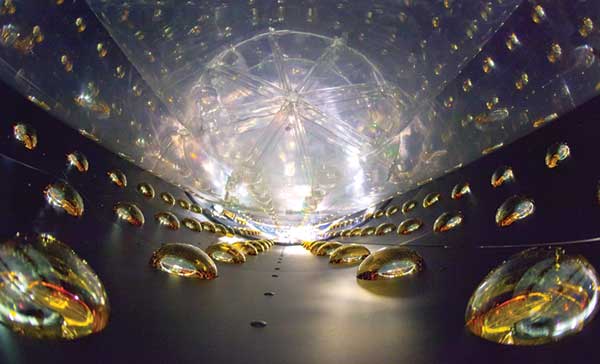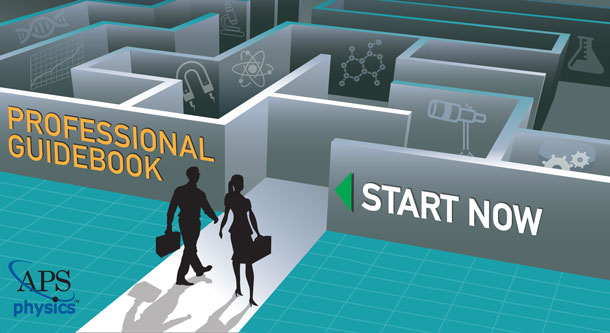Early Career Physicists: What’s Next?
Crystal Bailey, APS Careers Program Manager

Crystal Bailey
Before coming to the APS, Dr. Bailey did research in nuclear physics at Indiana University, Bloomington in the area of few-body systems. In 2008 she received the Konopinski Award for Outstanding Graduate Teaching from the IU Physics Department. She graduated with her PhD from IU in 2009.
Contrary to what many physics students (and many of their faculty mentors) believe, most physics graduates, whether bachelor’s, master’s, or PhD, will find permanent careers in the private sector rather than in academia. According to the AIP Statistical Research Center (SRC) Focus reports on employment of physics graduates, 70% of the potentially permanent initial hires of PhDs are in the private sector[1]; the NSF Survey of Doctoral Recipients has put the percentage of PhDs working in the private sector at between 40% and 55% over the past three decades[2] (and while employment in 4 year colleges was often a close second, the majority of those jobs were temporary positions such as lectureships, and postdoctoral positions). Even at the bachelor’s and master’s degree levels, out of those graduates who go straight into the workforce after receiving their degrees, over half will be in the private sector[3, 4].

Photo credit: Roy Kaltschmidt, photographer
Lawrence Berkeley Nat'l Lab
Furthermore, many of these graduates find these eventual careers in spite of, rather than because of, the career mentorship of a typical physics department. Generally speaking, there are few faculty members present in physics departments with prior experience working in industry (which is a stark contrast with other STEM disciplines like engineering, which frequently employs faculty with private sector experience). Furthermore, while many well-meaning physics faculty want to advise their graduates on how to pursue careers outside of academia, few have industrial colleagues in their professional network to whom they could turn to for advice on industry career mentorship.
For this reason, APS has been working hard to create resources and experiences which help to bridge this gap, so that more early career physicists can access the information they need to plan for a broad spectrum of careers.

The APS Online Professional Guidebook contains eight chapters that address the essential elements of a successful transition into the non-academic workforce; topics include Career Planning and Self-Assessment, Conducting Informational Interviews, Networking, Writing and Effective Resume, Interviewing and Negotiation, and more. Each chapter not only contains important advice and information, but also links to other resources on the website—such as 5-minute “webinette” clips from our top webinars on career preparation, online tutorials, links to employment and salary statistics information, and more.
In addition to the Professional Guidebook, the APS Careers website also offers an extensive library of career webinars. You can access our most popular webinar, “Putting Your Science to Work,” by celebrated career author and coach Peter Fiske with your APS Membership web ID. Another popular webinar, “Career Self-Advocacy: How I Got My Six Figure Salary in the Private Sector,” focuses on speaker Meghan Anzelc’s journey from being a high energy physics PhD student to a highly successful career in predictive modeling at some of the world’s top insurance companies. Another popular webinar, “Launching Your Career with an Industrial Postdoc,” focuses on how to find and apply for postdoctoral positions in private sector companies.
APS also offers several opportunities to connect directly with employers through our award winning APS Job Board, and on-site recruitment events at the APS March Meeting, Division of Plasma Physics (DPP) Meeting, and now at meetings of the Division of Atomic, Molecular and Optical (DAMOP) Physics. These meetings routinely attract a large number of industry employers who are seeking new scientific talent. We also offer a host of workshops at APS Annual and Division Meetings on key professional development topics, such as communication and networking. Check the APS careers website for information about all upcoming professional events at APS Meetings.
The APS Local Links and IMPact Programs provide excellent opportunities for networking and mentorship outside of the framework of APS scientific meetings. APS Local Links brings together physicists from all sectors at the local level, to meet on an informal basis every six weeks or so to build relationships and learn about opportunities. Many industry employers utilize Local Links gatherings as an opportunity to recruit recent graduates, or those close to graduating. The APS Industry Mentoring for Physicists (IMPact) Program creates an opportunity for graduate or early career physicists to connect with mentors in Industry for individual guidance on how to pursue careers in industry.
APS plans to continue developing new and impactful professional development resources, which we hope to promote through publications like the FECS Newsletter. Please look for announcements about upcoming career related events in future editions — and of course, if there are any resources we don’t yet offer that you would like to see, don’t hesitate to contact me at bailey@aps.org.
1. AIP Statistical Research Center, Focus on Physics Doctorates Initial Employment, March 2016.
2. NSF Survey of Doctoral Recipients and Integrated Survey Data, 1971 – 2010.
3. AIP Statistical Research Center, Focus on Physics Bachelor’s Initial Employment, April 2017.
4. AIP Statistical Research Center, Focus on Physics and Astronomy Master’s One Year After Degree, December 2015.
Dr. Crystal Bailey is the Careers Program Manager at the APS in College Park, MD. Crystal works on several projects which are geared towards marketing physics and physics career information to high school students, undergraduates, graduate students and physics professionals.
